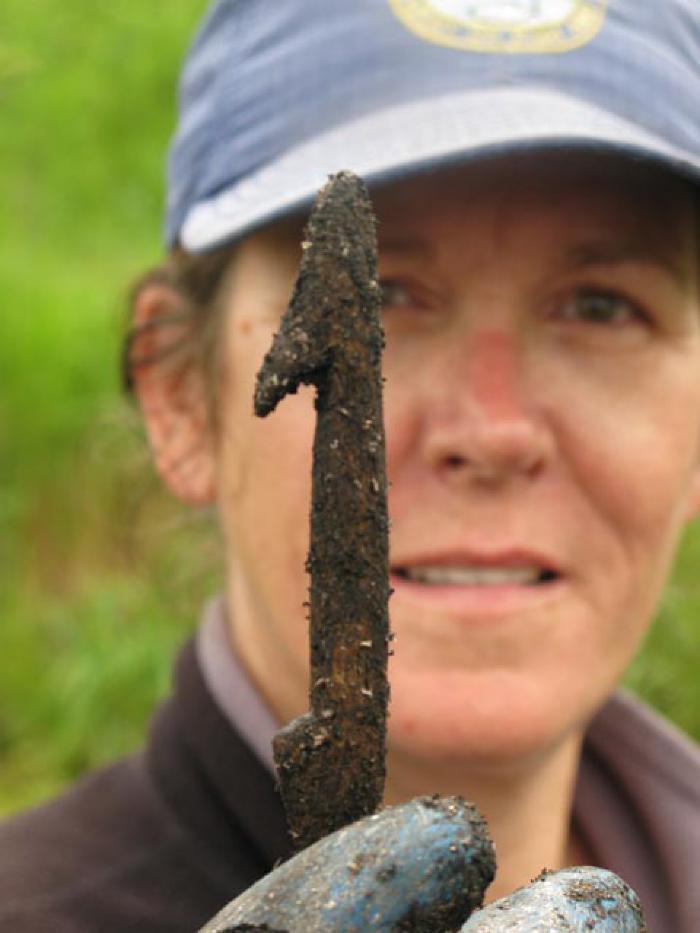Bone — Neneq

Like stone, wood, and hide, bone was a primary manufacturing material for prehistoric Alutiiq people, and the skeletal remains of animals were carefully butchered to preserve bone for raw material. Bone was processed into pieces much like wood. People split large elements, like whale and sea lion ribs, with the aid of wedges and mauls. Then they cut lengths of bone to size by sawing a fragment until it could be snapped into two segments. Tools were then shaped with a stone knife and sanded to a smooth finish with abrasive pieces of stone and pumice.
Due to its flexibility, bone was the preferred material for subsistence implements. Bone points, hooks, and digging sticks gave with the forces of use rather than breaking. Porous, lightweight whalebone was used for harpoons, bird arrows, fish spears, fishing hooks, and war arrows. Bone was also used for a variety of household objects. People hollowed whale vertebrae into vessels for grinding plants and fashioned compact, lightweight bird bone into needles and awls.
In addition to their technological value, some bones had spiritual significance. Alutiiq people believe that every animal has a spirit: a tiny replica of itself that rests in a special part of its body. Prince William Sound Alutiiqs held that the spirit of the sea otter rested in its bones. So the skeletons of captured animals were returned to the water to ensure their rebirth.
